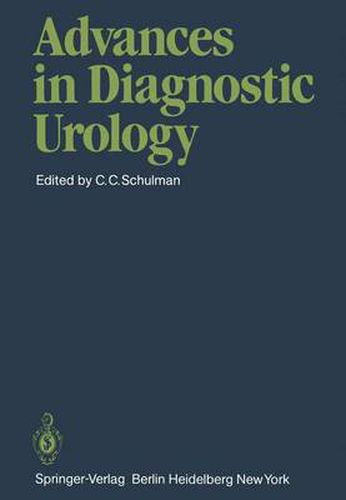Readings Newsletter
Become a Readings Member to make your shopping experience even easier.
Sign in or sign up for free!
You’re not far away from qualifying for FREE standard shipping within Australia
You’ve qualified for FREE standard shipping within Australia
The cart is loading…






This title is printed to order. This book may have been self-published. If so, we cannot guarantee the quality of the content. In the main most books will have gone through the editing process however some may not. We therefore suggest that you be aware of this before ordering this book. If in doubt check either the author or publisher’s details as we are unable to accept any returns unless they are faulty. Please contact us if you have any questions.
Aeeuraey in preoperative diagnosis has always been the basis of sueeess in urology. In the past deeade, major advanees have been made in diagnostie imaging of the kidney and genitourinary traet. Of the new reliable teehniques available, eeho- graphy, radioisotope studies and eomputerized tomographie seanning are of the greatest importanee in the investigation of renal and urinary traet diseases. These new methods of investigation have led to a radical change in the attitude and prae- tieal approach when evaluating a patient presenting with a urologie disorder. The teeh- niques each yield information of a different type and in eonjunetion with classie ra- diology must be used safely and with a logical sequenee in the investigation of a diag- nostie problem. They have greatly inereased the available evidenee on whieh diag- nosis is based and their use should diminish the number of false diagnoses and ul- timately improve treatment. The applieations ofthese reeently developed diagnostie methods in urology are reviewed in this book, based on the main eontributions given by a wide range of experts in their field during the last Congress of the European Assoeiation ofUrology, held in Athens in 1980. Intravenous urography, the first and major step in urologie diagnosis, developed more than half a eentury ago, ean still be improved, as shown by the routine use of early nephrotomography with rapid injeetion.
$9.00 standard shipping within Australia
FREE standard shipping within Australia for orders over $100.00
Express & International shipping calculated at checkout
This title is printed to order. This book may have been self-published. If so, we cannot guarantee the quality of the content. In the main most books will have gone through the editing process however some may not. We therefore suggest that you be aware of this before ordering this book. If in doubt check either the author or publisher’s details as we are unable to accept any returns unless they are faulty. Please contact us if you have any questions.
Aeeuraey in preoperative diagnosis has always been the basis of sueeess in urology. In the past deeade, major advanees have been made in diagnostie imaging of the kidney and genitourinary traet. Of the new reliable teehniques available, eeho- graphy, radioisotope studies and eomputerized tomographie seanning are of the greatest importanee in the investigation of renal and urinary traet diseases. These new methods of investigation have led to a radical change in the attitude and prae- tieal approach when evaluating a patient presenting with a urologie disorder. The teeh- niques each yield information of a different type and in eonjunetion with classie ra- diology must be used safely and with a logical sequenee in the investigation of a diag- nostie problem. They have greatly inereased the available evidenee on whieh diag- nosis is based and their use should diminish the number of false diagnoses and ul- timately improve treatment. The applieations ofthese reeently developed diagnostie methods in urology are reviewed in this book, based on the main eontributions given by a wide range of experts in their field during the last Congress of the European Assoeiation ofUrology, held in Athens in 1980. Intravenous urography, the first and major step in urologie diagnosis, developed more than half a eentury ago, ean still be improved, as shown by the routine use of early nephrotomography with rapid injeetion.